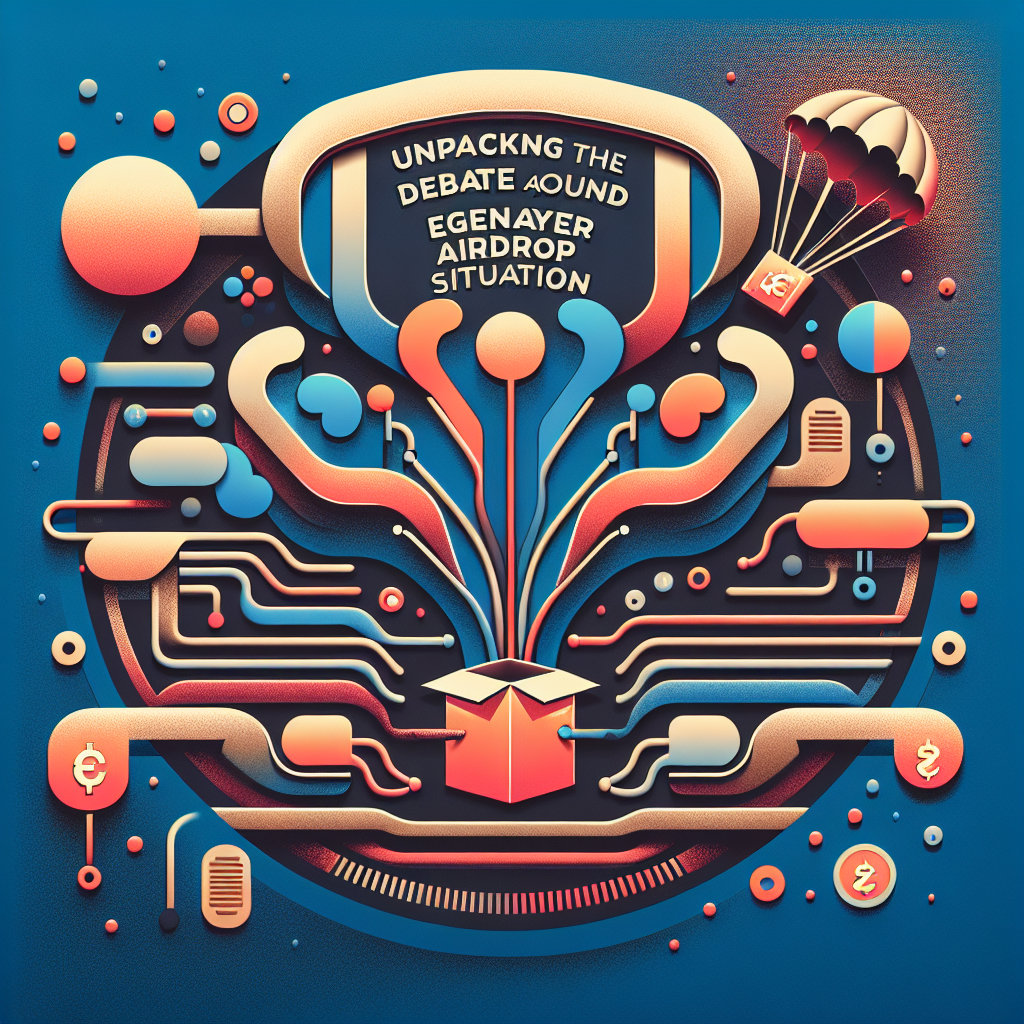Altcoins
Unpacking the Debate Around Eigenlayer’s Airdrop Situation

The advent of blockchain technology and the introduction of cryptographic assets have indeed revolutionized finance and how investments are perceived globally. Among the numerous emerging phenomenons, airdrops have become a notable strategy employed by blockchain projects to enhance their visibility, distribute tokens to potential users, and sometimes, to stir a bit of controversy. One such event that recently caught the eye of the cryptocurrency community involves Eigenlayer, a protocol aimed at reusing already staked tokens for securing multiple blockchain networks. However, this initiative has not been met without skepticism and debate.
Eigenlayer’s ambitious plan entails allowing token holders to stake their digital assets across various networks without the need to unstake them from their original blockchain. This approach, in theory, presents an innovative method to leverage the security and value of tokens, thereby amplifying the utility and efficiency of proof-of-stake networks. However, its recent airdrop has sparked a mixture of intrigue and criticism among investors and industry observers.
At its core, the controversy revolves around the mechanics and implications of the airdrop. Airdrops, in the traditional sense, are straightforward—they distribute free tokens directly to users’ wallets, often based on their existing crypto holdings. Eigenlayer’s airdrop deviates from this norm in a manner that raised eyebrows. The process involved requires participants to actively stake their tokens as a preliminary step to becoming eligible for the reward. This active staking precondition is seen by some as a conservative twist on the airdrop concept, potentially limiting wider participation from the community at large.
Critics argue that this model benefits holders of large amounts of cryptocurrency, who are more capable of absorbing the risks associated with staking, thus potentially centralizing the distribution towards the wealthier segment of the ecosystem. This concern is compounded by fears that the airdrop could concentrate voting power in the hands of a few, undermining the democratic ethos that many decentralized networks strive to uphold.
On the other hand, proponents of Eigenlayer’s approach highlight several benefits. First, it encourages more stakeholders to participate in securing the network, enhancing its overall safety and resilience. Additionally, by requiring active involvement from users, it ensures that the airdropped tokens are distributed to genuinely interested and engaged community members, rather than to speculators who might sell off their tokens at the first opportunity, potentially destabilizing the market.
Despite these arguments, the broader implications of Eigenlayer’s airdrop strategy go beyond the immediate reactions of the cryptocurrency community. It underscores a growing trend where blockchain projects are experimenting with novel mechanisms to distribute tokens, engage with users, and secure their networks. This evolution reflects the industry’s maturation, as projects seek to balance fairness, security, and efficiency in their operations.
Moreover, the debate surrounding Eigenlayer’s airdrop highlights the burgeoning discussion on governance in the crypto space. As decentralized protocols continue to evolve, the mechanisms through which they distribute power and rewards increasingly come under scrutiny. The challenge lies in designing systems that are not only technologically innovative but also equitable and inclusive.
Beyond the specifics of Eigenlayer’s strategy, the episode serves as a reminder of the complexities inherent in the governance and economics of decentralized networks. The ability to innovate within these constraints, address legitimate criticisms, and adapt to feedback from the community will likely be a determining factor in the success of blockchain projects going forward.
In conclusion, while Eigenlayer’s airdrop has indeed stirred controversy, it also represents a pivotal moment in the ongoing evolution of blockchain ecosystems. It challenges traditional airdrop models, provokes important discussions on equity and decentralization, and ultimately, contributes to the broader dialogue on how to best navigate the delicate balance between innovation and inclusivity in the cryptocurrency domain. As the industry moves forward, the lessons learned from such controversies will undoubtedly shape the next generation of blockchain projects and their strategies for community engagement, token distribution, and network security.
-

 Press Releases11 months ago
Press Releases11 months agoGaming Technologies of the New Time!
-

 Bitcoin8 months ago
Bitcoin8 months agoBitcoin Surges Past $64K as SEI and POPCAT Lead Daily Crypto Gains on September 25
-

 Altcoins3 months ago
Altcoins3 months agoBitcoin Declines Below $80K: deVere CEO Nigel Green Remains Bullish on Long-Term Outlook Following Strategic U.S. Bitcoin Reserve Announcement
-

 Press Releases1 year ago
Press Releases1 year agoEvo Exchange: Redefining the Decentralized Exchange Landscape
-

 Altcoins2 months ago
Altcoins2 months agoCalls for Enhanced Discussion on Bitcoin as Brazil’s Reserve Asset: A Move Towards ‘Internet’s Gold’
-

 Press Releases9 months ago
Press Releases9 months agoCODE, a Newly Born Project Brings Decentralization Back to the Main Menu
-

 Bitcoin1 year ago
Bitcoin1 year agoHouse’s McHenry Charges SEC Chief Gensler With Misleading Congress Regarding Ethereum (ETH)
-

 Press Releases1 year ago
Press Releases1 year agoGolden Cobra: Pioneering Real Utility and Sustainability in the Meme Coin Space




